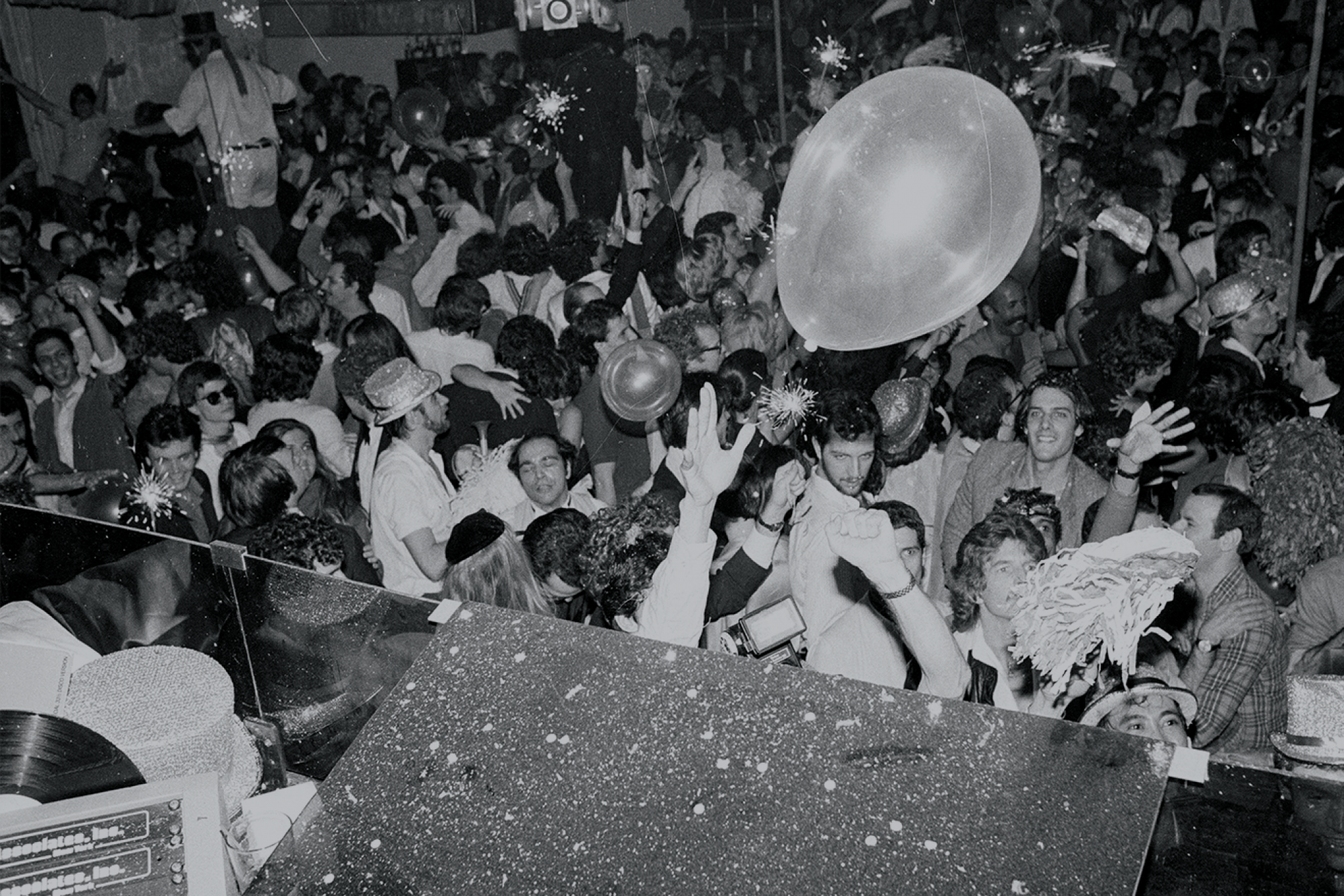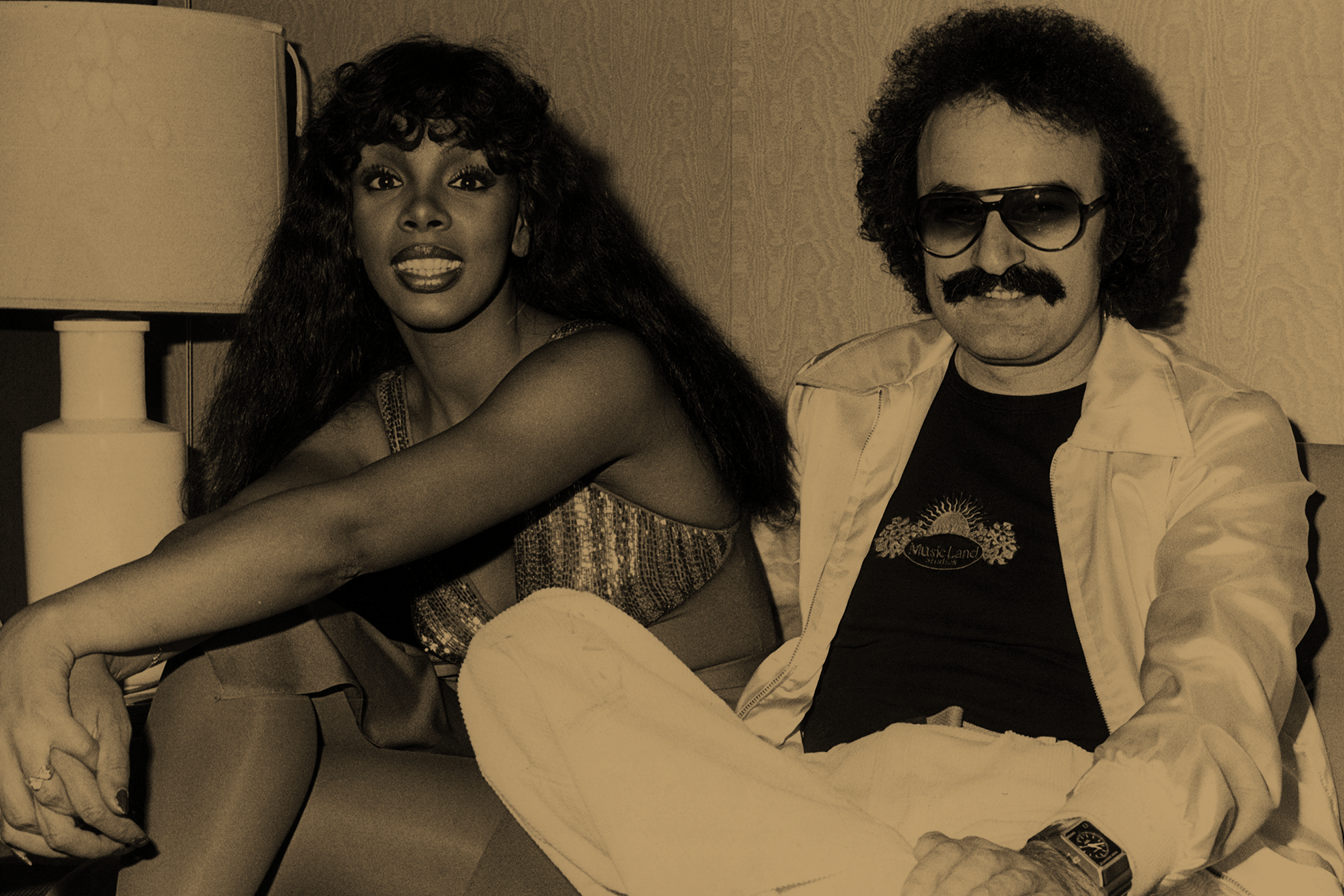 Cover stars
Cover stars
I feel love: Donna Summer and Giorgio Moroder created the template for dance music as we know it
The year 1977 was a momentous one for disco worldwide
On April 26 1977, Studio 54 opened in New York. Bianca Jagger arrived at the club for her birthday party draped in a diaphanous red dress and riding a white horse – led by a naked man. The photo spread around the world overnight, providing disco with one of its most iconic images – and the club became a byword for glamour and excess. Five months later, the movie that delivered disco to a straight audience premiered in Hollywood: Saturday Night Fever, starring John Travolta as a Brooklyn boy who lived for dancing (and shocking suits). The fact it had little to do with disco’s gritty roots mattered not. Disco was now for everyone.
Sandwiched between those two events came ‘I Feel Love’, produced by Giorgio Moroder and Pete Bellotte and perfectly delivered by Donna Summer. Released 40 years ago, yet still somehow managing to sound like the future even today, it’s dance music’s Year Zero; the song that started our journey through electronic disco, house, techno and beyond – and, in Patrick Cowley’s daring, psychedelic version, inspired the greatest remix of all time.
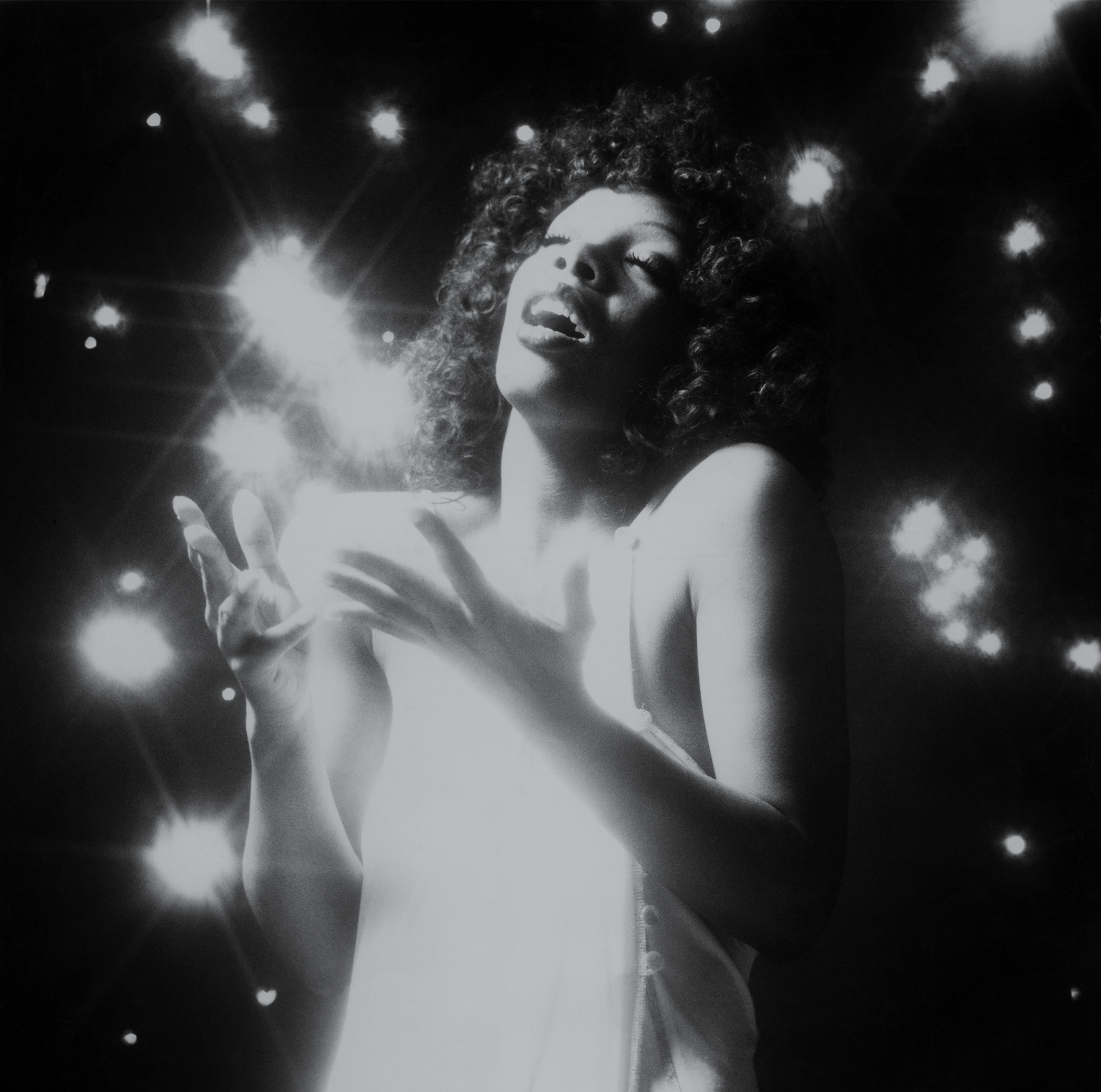
It had been a good few months for the gang at Musicland Studios. Deep in the bowels of the Arabella High-Rise Building in Munich’s Bogenhausen district, this pan-European collective of players had been a responsible for a string of hits that had turned disco on its head. Led by co-producers Giorgio Moroder and Pete Bellotte, this team had made a major breakthrough with the Donna Summer’s breathy hit ‘Love To Love You Baby’, which crossed over into the pop charts – but not before being banned by Radio 1 for being too sexy.
Donna Summer was one of a clique of itinerant musicians and performers who’d washed up in Munich at a time when the recording industry there was at its most vibrant. Originally a cast member of the hippie musical Hair in Germany, she swiftly established herself as an in-demand session singer. She was a popular part of the studio set-up. “We became good friends,” says Moroder, “She was an incredibly talented singer, who could improvise but was also very disciplined. As a person she was very funny.” According to Bellotte, one of the reasons she was easy to work with was her lack of interest in the recording process. “The whole time that we worked together there was never the slightest bit of friction. We were so lucky, because she wasn’t interested in the productions at all. So she’d come in the studio, usually at four o’clock in the afternoon, and would chat for hours. Then she’d look at her watch and say, ‘Oh I’ve gotta go!’ and she’d go into the studio and mostly sing it in one take – and be gone.”
The sessions for ‘I Remember Yesterday’, Donna’s fifth album, moved swiftly. “Everything happened so fast,” says Bellotte. “Our engineer Jürgen was fast, and the musicians were too. Albums evolved quickly, we never hung around. We were a working team and we just got on with it.” In stark contrast to their American and British label Casablanca Records, which appeared to be entirely fuelled by blizzards of cocaine, there was little excess going on in the Musicland Studios. Two of the team, Bellotte and engineer Jürgen Koppers, were tee-total, while Giorgio drank modest amounts. There were no drugs.
‘I Remember Yesterday’ was yet another concept album, cooked up by Bellotte and inspired by Anthony Powell’s novel A Dance to The Music Of Time (also the LP’s original title). Each song would evoke a different decade’s mood, from 40s swing to the 1960s with the Shirelles and Supremes, 70s funk and contemporary disco before alighting upon the future with the final track: ‘I Feel Love’.
Using synthesised music to sound futuristic was a well-worn trope in science fiction movies. As early as 1951, the theremin had been used in the B-movie The Day The World Stood Still, while the American electronic pioneer Wendy Carlos had drenched Stanley Kubrick’s dystopian A Clockwork Orange in synths.
The plan was to produce the song entirely using the Moog Modular 3P. The only problem was they didn’t own one. Fortunately, the classical composer Eberhard Schoener did. Since the Moog was notoriously temperamental they also needed to hire Schoener’s assistant and engineer, Robby Wedel. As Moroder admitted, “I needed him because even if I’d owned one I wouldn’t have been able to get any sound out of it.”
With its four cabinets and endless patch bays it looked like a mini Tardis. Bellotte was astounded at what Wedel could do with his unwieldy beast: “We got the first line down. So then Robby says, ‘OK, do you want to synch the next track?’ We didn’t even know what that meant. So he says, ‘I’ve laid down a synch tone from this Moog so that anything we record on the next track is going to lock it into that’. When we put in the next track it was absolutely spot-on. It was a revelation for us. The most astounding thing about Robby Wedel, who is the unsung hero of all of this, is that Robert Moog himself didn’t even know about this – he had no idea that this synching was even possible.”

Gradually, they pieced together the song. For the hi-hat they produced a white noise using the machine’s envelopes and cut it up, while the distinctive bassline was a sequenced sound produced by Wedel. But they were unable to get a big enough kick-drum, so their regular drummer Keith Forsey, the only human element, provided seven minutes of four-to-the-floor thump. “The Moog was really fun to work but the problem was it would go out of tune every few minutes,” recounts Moroder. “It was a disaster. With ‘I Feel Love’ I think we’d do twenty or thirty seconds, then stop. Then we’d go back, tune it and drop it in. It was quite a job.”
The lyrics were to be written by Summer and Bellotte, so Pete headed over to her house one night. Summer was on the phone so he made a start. After waiting three hours, with the lyric now complete, she finally came down. She told Bellotte: “Look, I’m really really sorry but I’ve been on the phone to my astrologer in New York. We were discussing my relationship.”
“She was with a guy called Peter Mühldorfer but she’d just met Bruce Sudano of Brooklyn Dreams, who she’d fallen for,” recalls Bellotte. “She called the astrologer because she wanted to go through Bruce’s star sign and charts; the astrologer had decided that she had to go with Bruce. She came down and said, ‘I’ve made my decision’.” Donna, lyrics handed to her, turned up to the studio and delivered the song in one take.
“‘I Feel Love’ is a brilliant combination of whipped-up synthesiser and Summer’s dreamy, driven, ecstatic vocals,” wrote Vince Aletti in his August 13 1977 column for Record World. “The pace is fierce and utterly gripping with the synthesiser effects particularly aggressive and emotionally charged. Again, this is unlike anything Summer, Moroder and Bellotte have done before.” During the session for David Bowie’s ‘Low’ album, also recorded in Germany, producer Brian Eno ran in one day after hearing ‘I Feel Love’ for the first time and said, “I have heard the sound of the future. This is it, look no further. This single is going to change the sound of club music for the next fifteen years.”
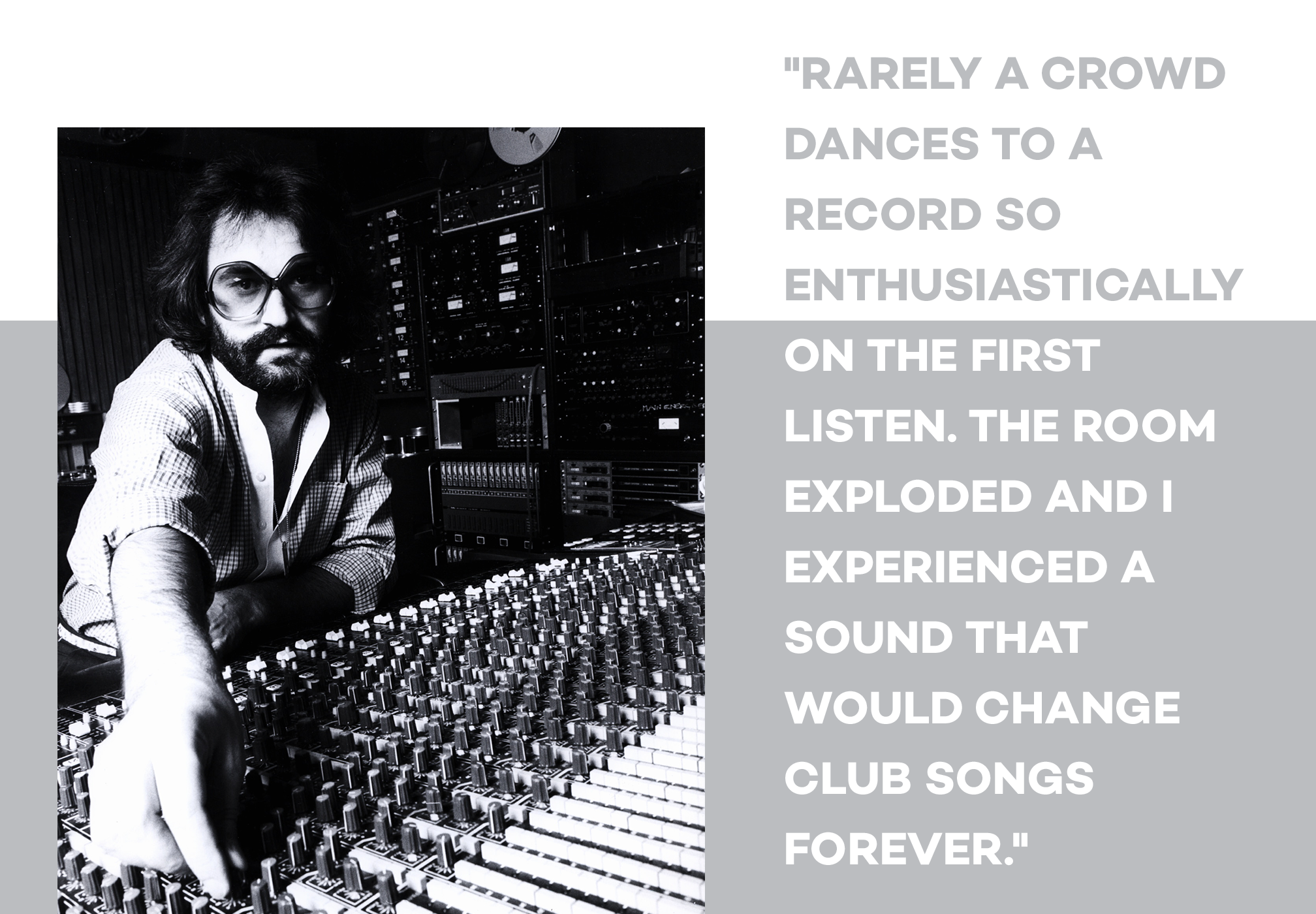
Despite the eventual rapture, few inside Casablanca had much faith in the song. “I remember, at the very beginning, [Casablanca MD] Neil Bogart was interested, but not as much as I would have liked,” recalls Giorgio. In fact, ‘I Feel Love’ was originally released as B-side to the ballad ‘Can’t We Just Sit Down (And Talk It Over)’. Nobody seemed to have an inkling of what they had done. “To us it was just a track and we didn’t even think it was a single,” recalls Bellotte. “We definitely did not think when it was released, yes we’ve done something special. It didn’t feel revolutionary.” But the song began to take off in clubs, first in the UK, where it was quickly switched to the A-side. ‘I Feel Love’ became Donna Summer’s biggest hit in the UK and reached No 6 in the US Hot 100.
Until ‘I Feel Love’, synthesisers had either been the province of serious musicians like Keith Emerson, Jean-Michel Jarre or Tangerine Dream or used as a novelty prop in throwaway songs like ‘Popcorn’ by Hot Butter or even on Moroder and Bellotte’s first hit ‘Son Of My Father’. ‘I Feel Love’ was a rejection of the intellectualisation of the synthesiser in favour of pure pleasure.
Its influence was swift and lasting. Its DNA seemed to effortlessly spill over into other songs, like leftfield classic ‘Hot On The Heels Of Love’ by Throbbing Gristle; it inevitably had a huge impact on disco, such as Kebekelektrik’s ‘War Dance’ or Blondie’s pop smash ‘Heart Of Glass’, which moved Debbie Harry to later comment, “Chris and I loved Donna and ‘I Feel Love’; at the time
it was quite groundbreaking and commercial and sexy.”
At the time, the king of disco in NYC was The Gallery’s Nicky Siano, who remembers Casablanca’s head of promotion Mark Paul Simon turning up to a hot packed party at the club in Summer 1977 with an acetate of the as-yet unreleased single and asking him to play it. “Everyone knew DJs didn’t play anything at a packed club without previewing it first,” says Nicky, who agreed to listen to it on his headphones. “I took a deep breath and put the heavy disc on my third turntable. I put my ear up to the headphone expecting the usual very good Donna Summer/Giorgio production. But it was not. I heard a syncopated synth line that was fresher than anything I had heard in years. It wasn’t a new record, it was a new style of production. I trusted my instincts and mixed into it. Rarely a crowd dances to a record so enthusiastically on the first listen. The room exploded and I experienced a sound that would change club songs forever.” When Marc refused to let him keep the acetate, Nicky had him thrown out of the club. “I was so important in the music industry at that time that he had Donna Summer call me personally and apologise. We made up.”
“At the very beginning I didn’t feel ‘I Feel Love’ would have that impact,” says Moroder. “But then months later, you’d hear the same bassline on other records. I must say, it is quite difficult now to have an EDM song that doesn’t have some kind of ‘I Feel Love’ bass. Even if you don’t hear it, it’s usually there and it’s actually quite difficult to not use it at all.”
And still its influence grew and spread. Hi-NRG, the white gay propulsive sound pioneered by Patrick Cowley, stood on its shoulders; the new romantic explosion of electro-pop in the UK came from a similar place; Italo-house, one of the foundation stones in house, was heavily influenced by it; and techno, as in love with glacial German synthesisers as it was P-funk, is massively indebted to this strange and beautiful teutonic masterpiece.
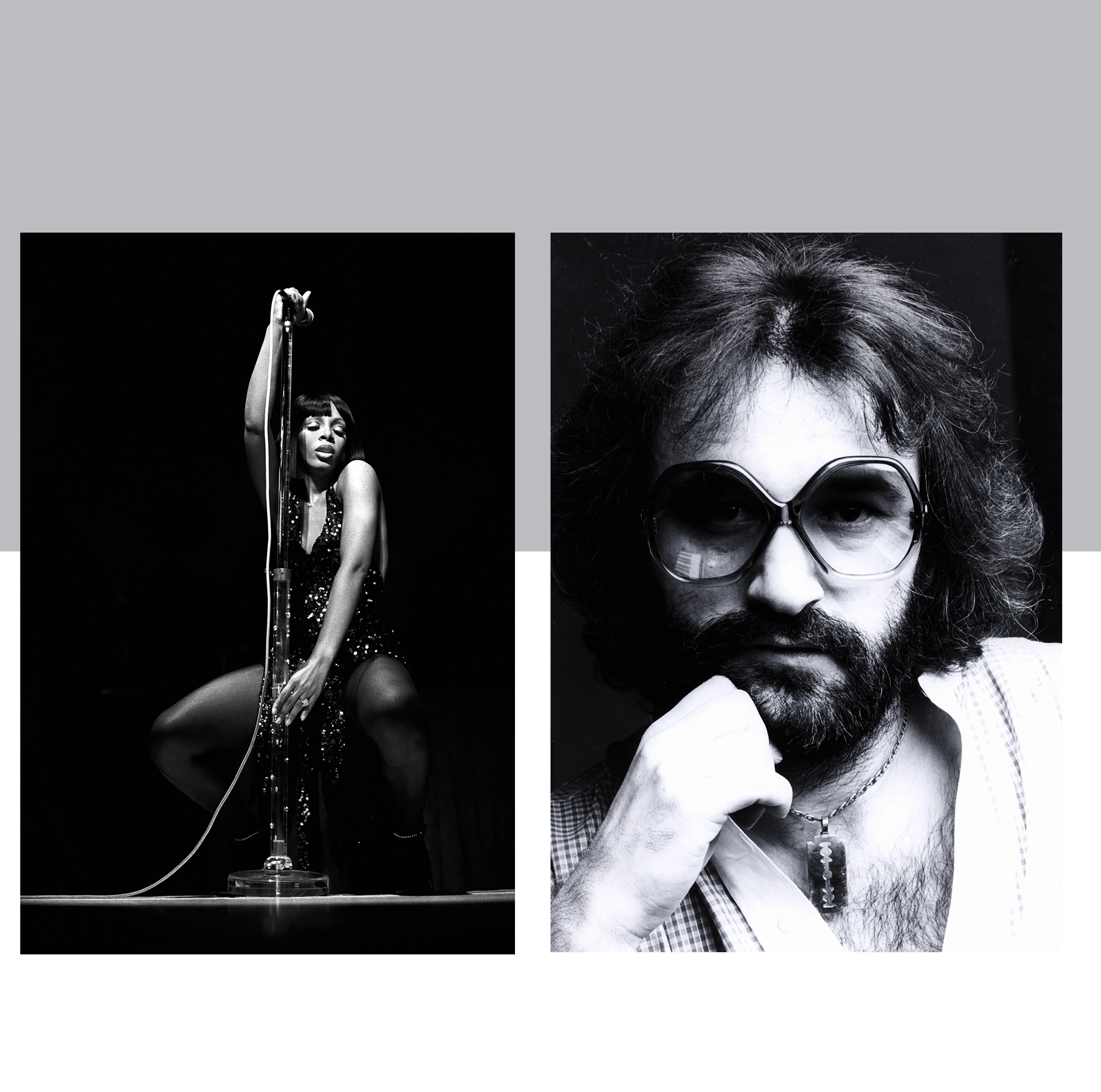
“In 1977 my parents opened their own night club near Frankfurt,” says Sven Väth. “I remember so clearly the release of this amazing song. I listened to it over and over again. At home, at my parents’ club and then as I started as a DJ in 1980 I played it up and down. To this day it is a record for magic moments.”
In fact, it has been a club constant since its release, and a gay classic. “As a young DJ I was always amazed at how Laurent Garnier would blend it with house music or techno depending on how he wanted the night to take a certain direction at the very specific moment he was playing it,” says Parisian DJ Deep. “I also remember that Derrick May had a way to play it with techno as if it was just another techno record.”
Another modern producer whose sound is directly influenced by this far-reaching song is Ewan Pearson: “The sound of ‘I Feel Love’ – that motorik, arpeggiated bassline – was the sound of my favourite dance records before dance music became Dance Music, and lots of my remixes have gone back to that kind of bassline,” he says. Modern disco freaks Horse Meat Disco are unafraid to bring out Donna for the right occasion: “It is safe to say it was the blueprint for all electronic dance music today,” says Jim Stanton. “It still has a massive impact every time I play it. I always feel like it’s something you never over-play, but still reserve for the right moment in your set. It has still got it and everyone knows it. It’s the ultimate ‘Get Out Of Jail Free’ card.”
Erol Alkan concurs. “It’s a record that’s as at home on the dancefloor at a wedding as it is in the grimiest, sweatiest nightclubs. I’ve known this record for as long as I’ve been aware of music, yet it still excites me. ‘I Feel Love’ deserves to be transmitted to alien planets as an example of humankind’s achievements in expression. Without doubt one of the greatest sound recordings of all time.”
Even now it feels as though we’re still trying to catch up with the futurism ‘I Feel Love’ foretold. Perhaps we will in another 40 years.
The I Feel Love 40 anniversary celebration will take place at Schimanski New York featuring Giorgio Moroder, Smirnoff Sound Collective artists and very special guests, paying full homage to the late Donna Summer and the epic disco era.
I Feel Love 40 is free and open to the public through RSVP on IFeelLove40.net.
[Image of Donna Summer above by Michael Putland]

